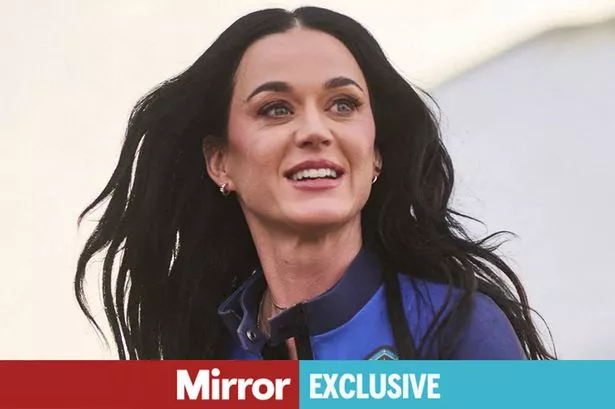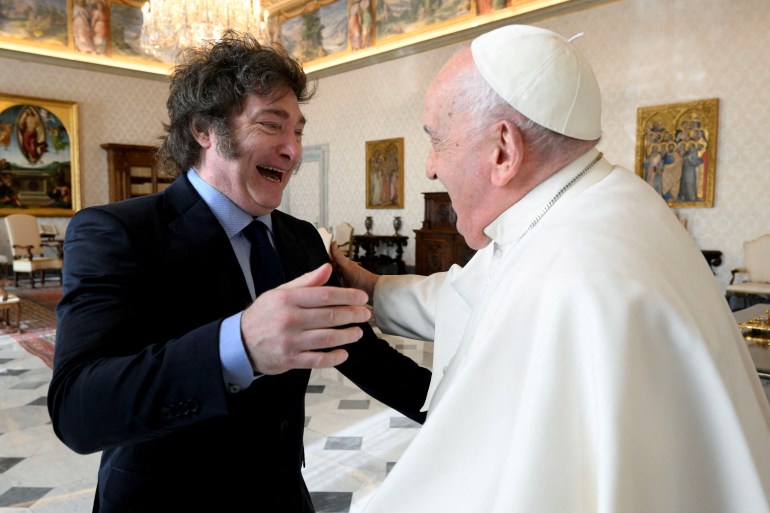Katy Perry created history on the Blue Origin space mission earlier this month but social media influencer Laura Young believes that the singer could have inspired more people in other ways
Katy Perry made history by taking part in the Blue Origin space flight which had an all-female crew. But influencer Laura Young believes that the flight which lasted just a matter of minutes lacked depth.
Laura, who was crowned Scotland’s Influencer of the Year has been an active campaigner on environment issues for sometime and has also spearheaded the ban on disposable vapes, which comes into place in June this year. The 27-year-old from East Renfrewshire has now spoken on the environmental impact Katy’s space flight has had and how she could have inspired her daughter, Daisy, in another way.
The flight, which consisted of Katy, Gayle King, film producer Kerianne Flynn, former NASA scientist Aisha Bowe, US journalist Lauren Sanchez, US research scientist Amanda Nguyen made history as they headed into space with an all female crew for the first time since 1963.
READ MORE: ‘I tried Whisker’s Litter-Robot 4 to see if it could end the daily cat litter nightmare for good’
Speaking exclusively to the Mirror, Laura who has been announced as the Girlguiding environment ambassador, scientist and climate activist said: “Any celebrity space flight would get backlash, but it was tough seeing this mission framed as groundbreaking when it lacked depth. And ironically, the fact it was all women made the criticism sting more, because we all hoped it would be more meaningful.”
Reflecting on Katy’s tribute to her young daughter, which saw her take a daisy flower on the flight in Jeff Bezo’s spacecraft with her, Laura added: “I thought it was lovely that Katy brought a daisy for her daughter but Daisy might learn more about protecting the planet by joining Rainbows and earning her Eco Award. Inspiration doesn’t have to leave the atmosphere. It can start right here, in your local community. “
However, Laura who boasts 43,200 followers alone admits she wanted to be inspired by the mission but was left feeling “deflated”. She said: “It looked more like a glossy PR moment than a genuine push for progress in science or space exploration. ” She went on to said that the flight had “zero scientific significance,” adding: “Nor has the importance of space science been highlighted throughout the media splash from the celebrity passengers. “
The flight has also sparked backlash from environmentalists after a 2022 World Inequality Report stated that a single space flight of several minutes emits more carbon emissions than one billion humans would in their lifetime. On the Blue Origin New Shepard website, they claim that the system of the “reusable” space craft had been designed to “decrease the cost of access to space and reduce waste. “
They add that the BE-3PM engine is fuelled by highly efficient liquid oxygen and hydrogen” and that it’s engine com-buster is “water vapour with no carbon emissions. ” Laura commented: “We’re being told to recycle, cut down on flying, and lower our carbon footprints – and then we watch celebrities rocket into space for under 11 minutes. Even if Blue Origin says it’s rocket emits just water vapour, that still has consequences for our atmosphere and climate.
“Emissions from this rocket eat away at the ozone layer, and do untold damage to our incredibly important atmosphere. The estimated environmental footprint of this trip is hard to quantify, but our best guess is that this one flight will have the same carbon footprint, if not more, as what someone will emit across their entire lifetime. “
But while commercial space travel appears to be an option for those with millions in the bank, Laura believes that the money used on such trips would be better suited to being spent on Earth. “Imagine how far it could go towards funding climate solutions or STEM education programmes that actually make a lasting impact,” she said.
The social media star who is a keen supporter of women entering careers in STEM (science, technology, engineering and maths) adnits it was “frustrating” following the trip. “It was sold as empowering, but it didn’t really show the work or the expertise behind real progress in these fields. It felt like faux feminism – style over substance,” she said.
However, while the trip has sparked backlash, Katy and the female crew have also received praise for the historic flight. Theresa Payton, who served as President George W. Bush’s Chief Information Officer told the Mirror: “It was fearless. It showed women, young women, girls that they belong among the stars. It definitely reminds us that we should dream bigger. Katy Perry’s words on the matter, I see she’s being panned but I have to say, as a working mum, her words hit home for me and every other working mother who’s juggling their career and family.
“So it was really great to see. I get it, some people feel like it was more of a billionaire’s joy ride, is what I think somebody wrote but I love this opportunity to talk about this. This wasn’t just a flight, it was really a launch pad for ambition. We have no idea how many young women and girls will walk away inspired. Maybe they’ll card the next Mars Rover or maybe they will create the next design, eco-friendly rocket. Maybe they’ll be inspired to be an astronaut but that’s the ripple effect that I think we could have from something like this. “
Girlguiding, the UK’s largest youth organisation dedicated to girls, has launched their Eco award for girls aged 4-18 to mark the first anniversary of their environmental sustainability strategy, which pledges to halve its carbon emissions by 2040 and is funded by The Leslie Sell Charitable Trust.














